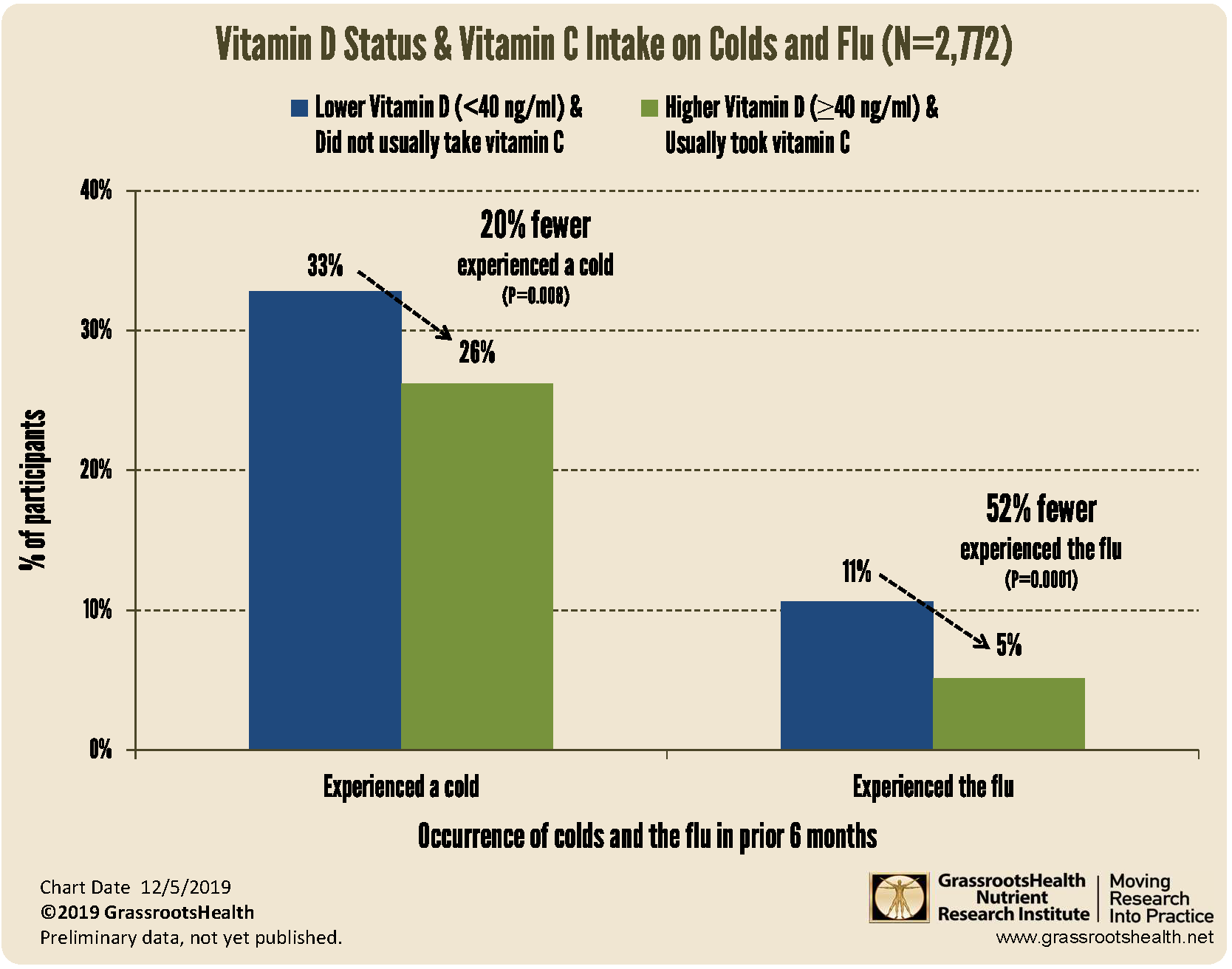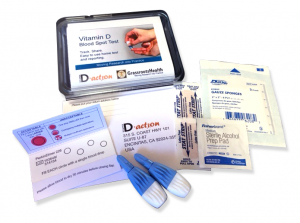Published on December 10, 2019
 In earlier posts we explored the relationship between vitamin D level and vitamin C intake and the occurrence of colds and the flu separately. Using the data you provided for the GrassrootsHealth study, we’ll explore whether vitamin D and vitamin C have a combined effect on colds and the flu.
In earlier posts we explored the relationship between vitamin D level and vitamin C intake and the occurrence of colds and the flu separately. Using the data you provided for the GrassrootsHealth study, we’ll explore whether vitamin D and vitamin C have a combined effect on colds and the flu.
For vitamin D alone, the percent of participants who experienced the flu in the prior 6 months was 32% lower for those with a vitamin D level at or above 40 ng/ml (100 nmol/L) compared to those with a level below 40 ng/ml (P<0.00001). For colds, it was 11% lower (P=0.00001).
For vitamin C alone, the percent of participants who experienced the flu in the prior 6 months was also 32% lower for those who reported that they usually took supplemental vitamin C compared to those who did not (P=0.009). For colds, it was 9% lower (P=0.14).
For vitamins D and C combined, the percent of participants who experienced the flu in the prior 6 months was 52% lower for those with a vitamin D level at or above 40 ng/ml who also reported that they usually took supplemental vitamin C compared to those with a vitamin D level below 40 ng/ml who did not report usually taking supplemental vitamin C (P=0.0001). For colds, it was 20% lower (P=0.008).
This preliminary analysis suggests that the combined effect of both maintaining a vitamin D status of at least 40 ng/ml and taking supplemental vitamin C could provide greater risk reduction for colds and the flu than relying on either nutrient alone. Further analysis is needed to assess this association by adjusting for other biometric and lifestyle risk factors. These analyses of individual and combined nutrient effects from GrassrootsHealth are possible because YOU provide us with data on multiple nutrients and health outcomes.
How are your nutrient levels for cold and flu season?
Make sure you know your vitamin D level, and take steps to keep it within a target of 40-60 ng/ml or 100-150 nmol/L! Through GrassrootsHealth Nutrient Research Institute, you can also test your essential elements magnesium, copper, zinc and selenium, toxins such as lead, mercury and cadmium, as well as your omega-3 levels, inflammation levels and thyroid stimulating hormone (TSH) level. Find out your levels today! Visit the test selection page (click the link below) to get your tests and see for yourself if your level can be improved.
Make sure you track your results before and after, about every 6 months!
How can I track my nutrient intake and levels over time?
To help you track your supplement use and nutrient levels, GrassrootsHealth has created an online tracking system called myData-myAnswers. For each specific supplement, you can track what days you take it, how much, and many other details. This will help you know your true supplemental intake and what patterns of use work for you to reach and maintain optimum nutrient levels. Check it out today!







